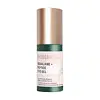What's inside
What's inside
 Key Ingredients
Key Ingredients

 Benefits
Benefits

 Concerns
Concerns

 Ingredients Side-by-side
Ingredients Side-by-side

Water
Skin ConditioningAloe Barbadensis Leaf Juice
Skin ConditioningSqualane
EmollientNiacinamide
SmoothingGlycerin
HumectantPanthenol
Skin ConditioningChondrus Crispus Extract
Skin ConditioningMalus Domestica Fruit Cell Culture Extract
Skin ConditioningAcetyl Tetrapeptide-5
HumectantAcetyl Hexapeptide-8
HumectantTocopherol
AntioxidantPentylene Glycol
Skin ConditioningCucumis Sativus Fruit Extract
EmollientTetrahexyldecyl Ascorbate
AntioxidantCamellia Sinensis Leaf Extract
AntimicrobialLycium Barbarum Fruit Extract
AstringentLycopene
AntioxidantVitis Vinifera Skin Extract
AntioxidantSodium Hyaluronate
HumectantCaffeine
Skin ConditioningAcacia Senegal Gum
MaskingDimethicone Crosspolymer
Emulsion StabilisingXanthan Gum
EmulsifyingCarbomer
Emulsion StabilisingEthyl Lauroyl Arginate Hcl
Skin ConditioningLecithin
EmollientAmmonium Acryloyldimethyltaurate/Vp Copolymer
Silica
AbrasivePhenoxyethanol
PreservativePotassium Sorbate
PreservativeCitric Acid
BufferingCaprylyl Glycol
EmollientWater, Aloe Barbadensis Leaf Juice, Squalane, Niacinamide, Glycerin, Panthenol, Chondrus Crispus Extract, Malus Domestica Fruit Cell Culture Extract, Acetyl Tetrapeptide-5, Acetyl Hexapeptide-8, Tocopherol, Pentylene Glycol, Cucumis Sativus Fruit Extract, Tetrahexyldecyl Ascorbate, Camellia Sinensis Leaf Extract, Lycium Barbarum Fruit Extract, Lycopene, Vitis Vinifera Skin Extract, Sodium Hyaluronate, Caffeine, Acacia Senegal Gum, Dimethicone Crosspolymer, Xanthan Gum, Carbomer, Ethyl Lauroyl Arginate Hcl, Lecithin, Ammonium Acryloyldimethyltaurate/Vp Copolymer, Silica, Phenoxyethanol, Potassium Sorbate, Citric Acid, Caprylyl Glycol
Water
Skin ConditioningGlycerin
HumectantGlyceryl Acrylate/Acrylic Acid Copolymer
Humectant1,2-Hexanediol
Skin ConditioningSorbitol
HumectantButylene Glycol
HumectantCaffeine
Skin ConditioningCamellia Sinensis Leaf Extract
AntimicrobialPalmitoyl Tripeptide-38
Skin ConditioningHydroxyacetophenone
AntioxidantAsparagopsis Armata Extract
Skin ProtectingHydroxypropyl Cyclodextrin
MaskingAscophyllum Nodosum Extract
Skin ConditioningChrysanthellum Indicum Extract
Skin ConditioningMica
Cosmetic ColorantPhenoxyethanol
PreservativeCI 77891
Cosmetic ColorantWater, Glycerin, Glyceryl Acrylate/Acrylic Acid Copolymer, 1,2-Hexanediol, Sorbitol, Butylene Glycol, Caffeine, Camellia Sinensis Leaf Extract, Palmitoyl Tripeptide-38, Hydroxyacetophenone, Asparagopsis Armata Extract, Hydroxypropyl Cyclodextrin, Ascophyllum Nodosum Extract, Chrysanthellum Indicum Extract, Mica, Phenoxyethanol, CI 77891
 Reviews
Reviews

Ingredients Explained
These ingredients are found in both products.
Ingredients higher up in an ingredient list are typically present in a larger amount.
Caffeine is most associated with coffee, tea, and cacao. In skincare, it helps with calming inflammation and is rich in antioxidants.
While caffeine is used to treat cellulite and and dark circles, further studies are needed to prove this. It has been believed to help with these skin conditions due to its ability to dilate blood vessels and increase blood flow.
Some studies are looking into caffeine's ability to protect against UV rays.
Learn more about CaffeineCamellia Sinensis Leaf Extract is derived from the leaves of the tea plant. Black tea, green tea, and oolong tea are all harvested from this plant.
This ingredient has many skin benefits:
This ingredient contains polyphenols, a strong antioxidant. Antioxidants help fight off molecules that damage skin cells.
On top of that, the antioxidants in green tea neutralize free-radicals from the sun. This gives the skin some extra UV protection, but should not replace sunscreen.
Many components of tea have anti-inflammatory properties.
Polyphenols and L-theanine help soothe the skin and reduce irritation. The caffeine in Camellia Sinensis Leaf Extract helps calm inflamed blood vessels.
Other compounds found in tea include: Vitamin Bs, linoleic acid, magnesium, calcium, iron, and zinc.
Research has shown both drinking Camellia Sinensis Leaf Tea and applying it to the skin can help boost skin elasticity and hydration. Studies also show using tea extract may reduce sebum, or oil, production.
Learn more about Camellia Sinensis Leaf ExtractGlycerin is already naturally found in your skin. It helps moisturize and protect your skin.
A study from 2016 found glycerin to be more effective as a humectant than AHAs and hyaluronic acid.
As a humectant, it helps the skin stay hydrated by pulling moisture to your skin. The low molecular weight of glycerin allows it to pull moisture into the deeper layers of your skin.
Hydrated skin improves your skin barrier; Your skin barrier helps protect against irritants and bacteria.
Glycerin has also been found to have antimicrobial and antiviral properties. Due to these properties, glycerin is often used in wound and burn treatments.
In cosmetics, glycerin is usually derived from plants such as soybean or palm. However, it can also be sourced from animals, such as tallow or animal fat.
This ingredient is organic, colorless, odorless, and non-toxic.
Glycerin is the name for this ingredient in American English. British English uses Glycerol/Glycerine.
Learn more about GlycerinPhenoxyethanol is a preservative that has germicide, antimicrobial, and aromatic properties. Studies show that phenoxyethanol can prevent microbial growth. By itself, it has a scent that is similar to that of a rose.
It's often used in formulations along with Caprylyl Glycol to preserve the shelf life of products.
Water. It's the most common cosmetic ingredient of all. You'll usually see it at the top of ingredient lists, meaning that it makes up the largest part of the product.
So why is it so popular? Water most often acts as a solvent - this means that it helps dissolve other ingredients into the formulation.
You'll also recognize water as that liquid we all need to stay alive. If you see this, drink a glass of water. Stay hydrated!
Learn more about Water